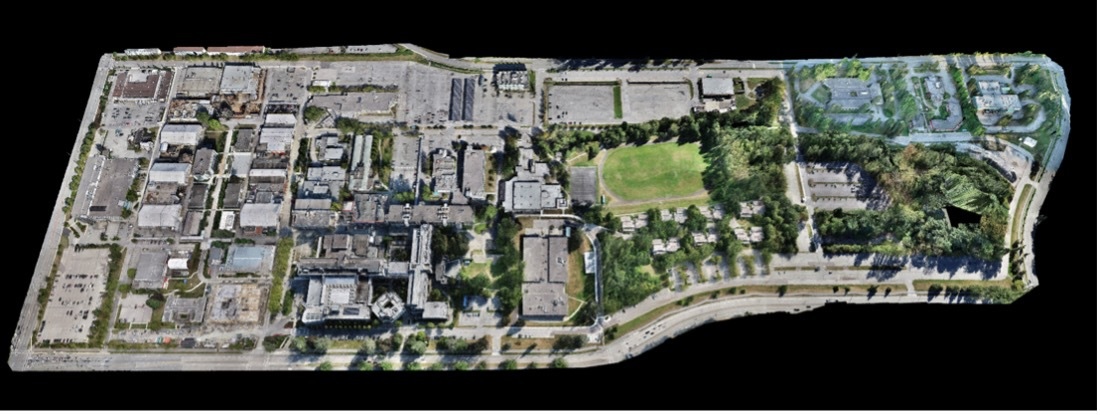
Are you suffering from tech fatigue? Overwhelmed by too much construction technology? If so, Hexagon’s Adam Cisler offers a solution.
BIM, robotics, drone surveying, machine control and project management workflows – each stage of a project has its digital sidekick. Despite many well-documented benefits of implementing digital technologies, some construction professionals suffer from tech fatigue – the feeling of being overwhelmed by too much technology, too many platforms and no clear path to strategic digital transformation.
With a growing number of solutions to choose from, integrating new technologies with existing systems can be complex. Plus, a lack of comprehensive training strategies and a shrinking talent pool can make the idea of choosing and adopting more technology seem unappealing and daunting to contractors and their teams.
Yet, technology is evolving at a rapid rate, and businesses that don’t adopt digital solutions risk losing their competitiveness. Hexagon’s Autonomous Tech Outlook, a survey of more than 1,000 general contractor firms in Australia, the UK and North America, sheds light on this. More progressive contractors – those that adopted more autonomous, digital solutions – had an advantage when competing for new business, enhanced sustainability, reduced waste, improved cross-functional collaboration and stepped up safety compliance.

“It is important for contractors to remember they don’t need to be the experts at everything. They don’t even need experts in their team.”
So, how can contractors struggling with talent erosion and tech fatigue continue to adopt new digital technologies?
Bridging the skills gap
The construction industry is a large ship that turns slowly. Change takes time – it can take decades to shift mentalities and practices.
For contractors who wrestle with up to 40 different apps daily, updating practices can be difficult and time-consuming. Virtual design and construction centres around people, processes and technology. Implementing comprehensive BIM software, for example, will impact all three of those areas and will therefore take longer to adopt.
It is important for contractors to remember they don’t need to be the experts at everything. They don’t even need experts in their team.
In our survey, progressive companies were 10% more likely to be hiring external consultants to tackle business challenges, but only 3% more likely to be hiring new internal experts. Technology providers have the resources and the expertise to manage the set-up, training and delivery, allowing contractors to focus on their core competence – managing the construction project.
Ambitious 3D modelling
Outsourcing to BIM and reality capture experts is an efficient way to reap the benefits of technology without the need for in-house implementation processes. For example, the British Columbia Institute of Technology (BCIT) outsourced the digital scanning and modelling of its six campuses to our team. The goal of the project was to implement smart building practices to help BCIT manage costs and schedules, adhere to environmental regulations, and pursue its innovation and social impact goals.
This was BCIT’s largest-ever documentation project, spanning 56 buildings and a total of 278,709 sq m. The scale posed challenges for the BCIT team, which did not have the technological expertise or equipment to complete it in-house.
Specialists at Multivista, part of Hexagon, captured 1.5 million images for 3D models and terabytes of 3D point cloud data. By outsourcing to a technology expert to manage this large project and dataset, the pressure was taken off internal teams in the resource-intensive planning and delivery stages. BCIT overcame the challenges of scale and outdated information to gain comprehensive, accessible, and integrated documentation of their facilities for future upkeep.

Now is the time to act
Right now, traditional approaches still work in some cases, but soon a certain level of technology will be expected. BIM is already mandatory for some projects in the UK, Singapore, UAE, South Korea and several German states.
Major companies such as Hexagon have already made the technology easier to adopt, the software more intuitive and the workflows more seamless to make digital solutions more accessible for non-experts. Scan-to-BIM technology has advanced to the point where a facility can be digitally modelled without needing an in-house modelling expert.
Meanwhile, several innovations will make tech adoption even more accessible. For example, AI and improvements in user interfaces and user experiences are making products easier to navigate and adapt to. Over the next five years, generative AI will likely enable anyone to have an agent for all types of modelling, reducing barriers to adoption.
The digital construction site
The construction industry is at a critical point where technology is taking off, and it will continue to develop in the coming years. If embracing digital solutions feels overwhelming now, it will be even harder to adopt in the future. The longer it’s left, the wider the gap between competitors will grow. On the other hand, getting started now will reap immediate ROI, including clearer communication, improved schedule management and future-proofing your business.
Ultimately, the industry is moving towards a digital construction site. Contractors should leverage the expertise of tech providers to bridge the skills gap and help overcome the sense of fatigue. Kicking off a digitisation journey can feel overwhelming. To get passed this, demystifying the technology and making it more accessible is essential. This is where technology providers can help by providing tailored training to those opting to implement in-house solutions as well as managing the delivery of digitisation projects to those outsourcing.
Adam Cisler is senior solutions engineer at Hexagon Building Solutions – Integrated.
Don’t miss out on BIM and digital construction news: sign up to receive the BIMplus newsletter.











